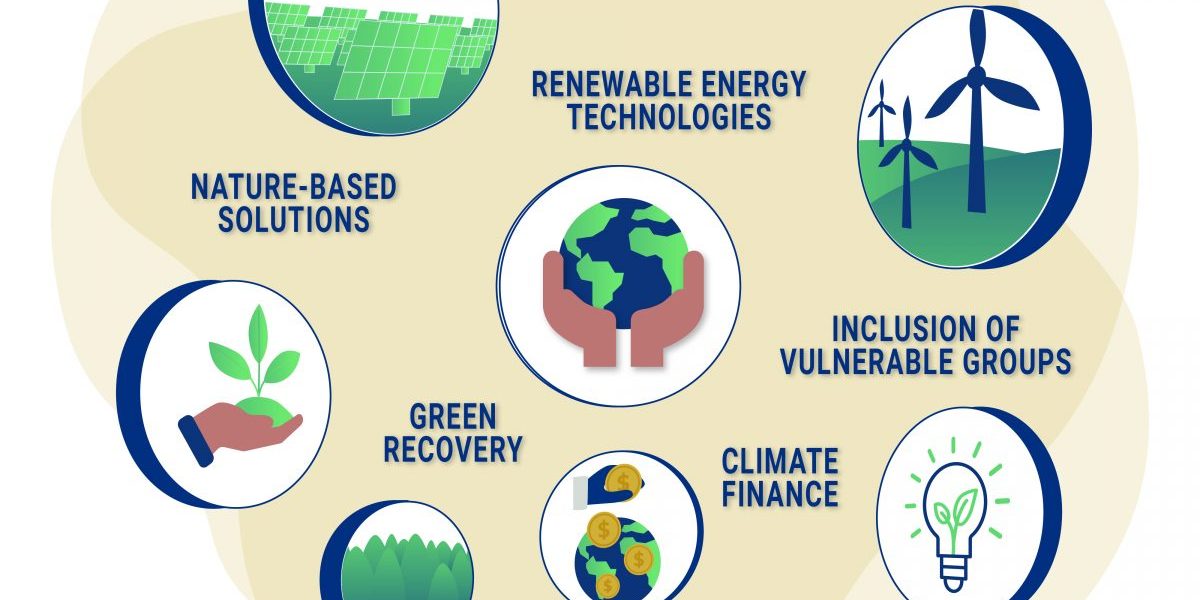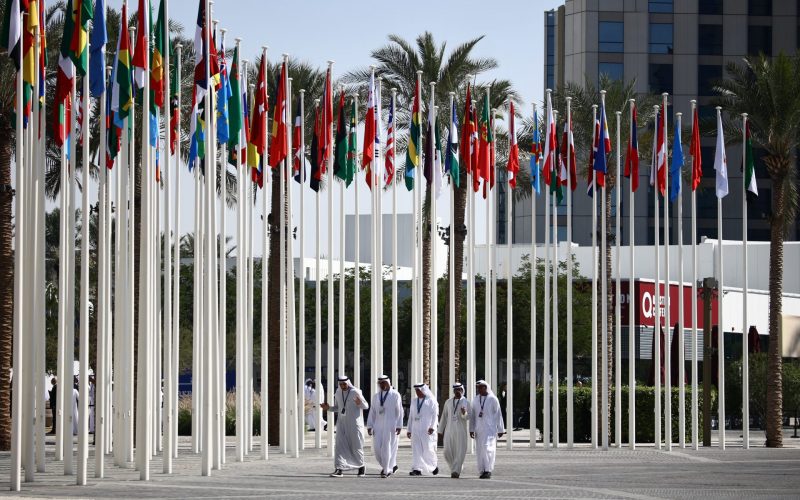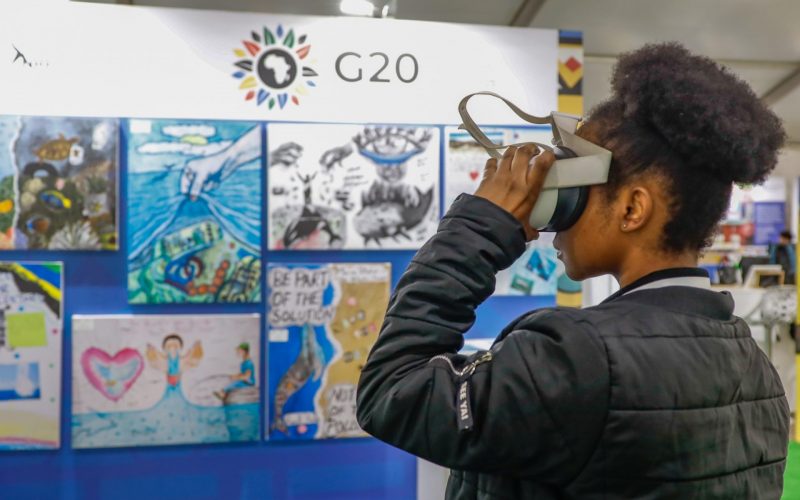Recommendations
- Extensive stakeholder engagement and consultation processes, driven from the highest political level, are key in NDC development to ensure ownership by all stakeholders. This includes marginalised groupings, such as women and the youth.
- Updated NDCs must be informed by improved data collection and in-depth technical analysis and must align with existing climate and development policy processes and frameworks, including countries’ long-term, low-carbon emissions frameworks.
- NDCs must be enhanced to include details such as quantifiable mitigation and adaptation actions, sectoral targets, as well as detailed implementation roadmaps, with explicit reference to the required means of support.
- The use of forecasting tools, including building scenarios for alternative futures, can enhance NDC ambition, strengthen dialogue and catalyse transformative change.
Executive summary
Nationally Determined Contributions (NDCs) are national policy instruments that communicate countries’ domestic climate commitments to the international community, report progress towards these commitments and outline support that is needed to ensure effective implementation. NDCs are required to be updated every five years to ensure increasing ambition and alignment with the latest climate science. The NDC revision process allows countries to reflect internally and draw on the experiences of others, both in the region and globally. Southern African Development Community (SADC) countries are at different stages in this process. Of the 16 Member States, 11 were able to submit their revised NDCs to the United Nations Framework Convention on Climate Change (UNFCCC) in advance of the UNFCCC’s twenty-sixth Conference of the Parties (COP26) in November. This policy briefing seeks to promote the uptake of key lessons from NDC revision processes for the SADC region, with good practice examples drawn from both within and beyond the region. Recognising that NDCs must be reflective of national priorities and circumstances, these revision processes can support development objectives by unpacking and analysing key elements of other countries’ NDCs – both in content and process – as the basis for engagement and dialogue between regional climate policy stakeholders.
Introduction
The Paris Agreement aims to avert dangerous climate change by rapidly phasing out greenhouse gas (GHG) emissions by the second half of the century (to achieve ‘net zero’ emissions), while promoting sustainable development and poverty eradication. The agreement, reached at climate talks in Paris in December 2015, seeks to limit the rise in the world’s average surface temperatures to ‘well below’ 2°C compared to pre-industrial levels, while ‘pursuing efforts’ to limit temperature rise to 1.5°C.
NDCs form the backbone of the Paris Agreement. They describe each country’s self determined plans for curbing GHG emissions and enhancing resilience, with targets typically set for five- or ten-year periods (i.e., currently until 2025 or 2030). A key principle of NDCs is that no country should backslide on its stated targets and that all countries should submit increasingly ambitious NDCs, often described as a ‘ratchet mechanism’. NDCs are intended to be bottom-up processes in which countries contextualise their climate targets and contributions based on their unique set of national circumstances and priorities. These roadmaps are intended to guide future actions across all sectors and stakeholder groupings, incorporating domestic climate-related risks, challenges, priorities, and opportunities from an economy-wide perspective.
Countries have been mandated to revise their original 2015 NDCs by COP26, which was hosted in November 2021. Most countries submitted revised NDCs by this deadline – though these NDCs vary considerably in their level of ambition and detail. Some NDCs reflect increasing ambition through new commitments to reduce GHG emissions or promote adaptation, or both, while some countries have updated their existing plans with new data, information and/or assumptions.1Costa Rica, Kenya, Ethiopia, Nigeria, Kenya, Morocco, Nepal and the UK have been rated by the CAT Climate Action Tracker as being ‘almost sufficient’ in terms of ambition. The Gambia has the highest rating and is seen as compatible with the 1.5°C temperature limit of the Paris Agreement. Many countries’ pledges have also been rated as insufficient. However, many countries have not proposed more ambitious targets and their plans fail to include details related to enhanced action and implementation.
The development of inclusive, comprehensive and ambitious NDCs remains a challenge for many states. At the same time, good practice is emerging and there is significant potential for states to learn from each other’s experiences. This is of value for the states yet to submit revised NDCs, but also has wider value, given that all parties to the Paris Agreement will need to again revise their NDCs over the next five-year window (indeed, there are growing calls for this revision process to be accelerated, and the Glasgow Pact that emerged from COP26 requests countries to revise their NDCs by the end of 2022).
In this context, the South African Institute of International Affairs and the Konrad Adenauer Stiftung’s Regional Programme for Energy and Climate in Sub-Saharan Africa hosted a workshop titled ‘Enhancing NDCs Across the SADC Region’ on 8 September 2021. The objective was to promote dialogue and lesson-sharing amongst Southern African stakeholders by drawing on insights from NDC processes from both within (South Africa) and outside (Rwanda and Costa Rica) the region.
The workshop highlighted the urgency of achieving the mitigation and adaptation goals of the Paris Agreement. It also highlighted the opportunities for bolder action that exists for the SADC region through the NDC revision process – for example, to avoid carbon lock-in and reduce transition costs; to adopt new, cost effective technological solutions that support enhanced ambition, such as renewable energy solutions; to incorporate the latest scientific data into actions and strategies; to enhance resilience building and protect communities; and to open up the engagement process to improve buy-in and support from a broad range of constituencies, including vulnerable groupings. For all countries, mitigation and adaptation actions outlined in NDCs can help to achieve national development objectives, including implementation of the Sustainable Development Goals (SDGs).
COP26 has called on all countries to revisit and strengthen their plans for cutting GHG emissions and for reducing climate risk. Without bold and ambitious climate action the world will fail to achieve the goals set out by the Paris Agreement. A further key message emerging from COP 26 was that the developed world should urgently scale up the provision of climate finance to help developing countries adapt to global warming.
Inclusivity
Stakeholder engagement in the climate decision-making process directly impacts the level of buy-in from affected constituencies and from those who will ultimately implement the policy plans. Multi-stakeholder forums strengthen interaction, create a platform for information sharing and awareness, and provide a space to signal potential for new investment opportunities and collaboration. Establishing a clear and inclusive process to revise and enhance the NDC is a vital first step.
South Africa’s revised NDC was endorsed by Cabinet in September 2021. For almost a year prior to its approval, South Africa’s Department of Forestry, Fisheries and the Environment (DFFE) undertook a series of technical consultations and stakeholder meetings, including a three-month public engagement outreach process that included a road show to South Africa’s nine provinces and an open call for written submissions. DFFE met with business and industry, NGOs and community-based organisations, as well as specific interest groups such as youth advocates. High-level endorsement from influential figures with convening power from diverse stakeholder constituencies, such as provincial Members of the Executive Councils, high-level government officials and the Minister of Forestry, Fisheries and the Environment, increased ownership, credibility, and facilitated cooperation within governments and non-state actors. The Presidential Climate Commission also brought together stakeholders in support of a fair transition towards low carbon economic growth.
A key lesson offered by the South African NDC revision process is the importance of an internal dialogue process between government departments and state agencies prior to the NDC public outreach process, to ensure that all parties are aligned. In this regard it is important to fully understand one’s internal governance processes and plans, as well as existing climate policy architecture. For South Africa this includes the Inter-Governmental Committee on Climate Change; the National Committee on Climate Change; the Presidential Climate Commission; and Cabinet processes and approvals, as well as many climate policies such as National Climate Change Adaptation Strategy and the draft Climate Change Bill.
Strong engagement with the ministries responsible for finance and planning is also important for successful NDC implementation, and climate actions should be framed in line with these ministries’ key agendas, including economic growth, job creation and public welfare. In the case of Uganda, the Ministry of Finance, Planning, and Economic Development is fully engaged in NDC planning processes.2The Coalition of Finance Ministers for Climate Action, Ministries of Finance and Nationally Determined Contributions: Stepping Up for Climate Action. July 2020: 7. In Mali, recommendations from the Ministry of Finance and Planning have been crucial to NDC development.3NDC Partnership. NDC Partnership Experience with Multi-Stakeholder Engagement: Key Lessons Learned. Insight Brief, August 2019: 4. In addition, development partner consultations can enhance the process of NDC implementation. In Kenya, the government organised development partner coordination meetings around the revision of its National Climate Change Action Plan to encourage funding alignment with emerging government priorities. Mali has similarly engaged donors in a coordinated way, including organising a preparatory NDC donor workshop.4NDC Partnership, ‘NDC Partnership Experience’. 2019:5.
Important lessons can also be learned from countries regarding the inclusion of vulnerable groupings. Zambia’s NDC, for example, integrates gender elements into its legal frameworks and budget reforms. Zambia has integrated gender indicators into its NDC implementation plan, as well as in its monitoring and reporting framework. Vietnam, Costa Rica, Jamaica and other countries have made specific efforts to include youth as a key stakeholder group in the NDC revision process. In Costa Rica, youth representatives serve as experts in imagining future scenarios to build out the NDC. The government has also provided training to ensure that the youth constituency is knowledgeable about how they can contribute, now and in the future.5Ralien Bekkers and Jamie Bindon. Youth and 2020 NDCs: A driving force for higher climate ambition. 23 November 2020. NDC Partnership.
Alignment
NDCs must align with existing national, sub-national, and sectoral sustainable development goals and strategies; after all, NDCs are intended to be a vehicle to support the implementation of climate and development priorities. For many African countries, this includes pressing socio-economic imperatives and the need for a just and equitable transition. This also includes aligning COVID-19 green recovery efforts with climate action. NDCs must also ensure a strong link with the SDGs, including reference to social equality, human rights and food security. In Mozambique, for example, the government has used the NDC process to catalyse the 2020-2025 NDC operationalisation plan and to mainstream climate change in the next five-year Development Plan.6Margaret Barihaihi, Changing the game: Mozambique launches partnership plan to catalyse implementation of Long-Term NDC targets. 7 February 2019. NDC Partnership.
NDCs are essential for ensuring that cumulative global efforts lead to net-zero emissions and climate-resilient development by 2050. Many countries are working to ensure that their NDCs are aligned with their long-term strategies in terms of ambition, transformative vision and actions. Rwanda, for example, aligns its NDC priorities with its Green Growth and Climate Resilience Strategy 2050, while South Africa’s NDC works towards achieving its Low Emission Development Strategy 2050.
Evidence-based
Scientific research and robust evidence are the foundations needed to build and update a country’s NDC. Developing high quality technical analysis, collaborative research, modelling, and scenario building with local teams and partner organisations is essential to ensure objective, impartial and balanced perspectives, that will ultimately enhance political buy-in and policy support. In the case of South Africa, partnerships with academia, the Council of Scientific and Industrial Research, and other technical bodies have facilitated and strengthened this process. Governments needs to provide guidance and input to researchers and modellers from the outset of the process so that detailed research can be tailored to key policy imperatives and government priorities.
Quantifiable
Rwanda was the first country in Africa, and the first Least Developed Country globally, to update its NDC. Submitted to the UNFCCC in May 2020, the revised NDC provides additional details on quantified mitigation and adaptation targets. For example, it breaks economy-wide targets down into sector-specific targets and specified strategies for achieving these targets. The mitigation interventions planned in the updated Rwanda NDC are mainly in energy, transport, buildings, agriculture and waste management, while adaptation will focus on integrated water resource management, agriculture, land use and forestry, human settlements, health, transport, mining and disaster management.
Costa Rica has also made significant improvements in quantifying emissions through its national GHG inventory system, focusing on agriculture, forestry and land use sectors. Costa Rica is now able to detect how much forestry contributes to the NDC mitigation calculations and targets.
Means of support and monitoring
To date, NDCs in the region include only modest details about the support needed for the implementation of NDCs. Rwanda’s updated NDC includes a detailed breakdown of the funding requirements that are specifically calculated for mitigation and adaptation priorities. The total estimated cost for Rwanda’s identified NDC mitigation and adaptation measures to 2030 is $11 billion. Conditional measures (which depend on receiving international support) are around 60%, while unconditional account for around 40% of the total estimated funding requirements. Besides financial requirements, Rwanda’s NDC also includes specific details about technology transfer and capacity building needs, as well as country-driven policy programmes and institutional arrangements for implementation. Its NDC includes a detailed implementation matrix for all priority intervention areas, with details around timeframes, responsibilities, funding estimates, adaptation and mitigation co-benefits, as well as SDG alignment. There is a dedicated monitoring, reporting and validation (MRV) framework to track NDC implementation.
South Africa is also developing an implementation framework and resource mobilization strategy, which can serve as the basis for partnerships. South Africa’s NDC highlights the importance of ensuring that developing countries are central voices in international debates around programming and operating support mechanisms, particularly those under the UNFCCC; partly this is a matter of fairness, but it also helps to ensure that support design is efficient and speaks to the needs and contexts of developing countries.
Anticipatory
In 2020, in its NDC revision process, Costa Rica underwent a participatory scenario development exercise to test climate plans and policies underpinning their NDC. This comprised of multiple stories about the future (based on drivers of change) to anticipate possible changes and imagine what various possible futures of Costa Rica might look like. The process was designed with assumption-based planning, a methodological framework to integrate quantitative and qualitative approaches. This included computer modelling to determine the costs and benefits of decarbonization, as well as asking questions about the quantitative implications of changes in the outcomes of climate policies, for example of the food system or the transport sector. It also included a scenario guided NDC enhancement process that comprised of more than 350 stakeholders from all NDC sectors an stakeholder groups. This included specific consultations with marginalised groupings such as the elderly, indigenous people and the LGBTQ community. This qualitative information was also used to test the assumptions, plans and policies that reinforce the NDC. These approaches helped Costa Rica to develop an ambitious NDC through inclusive, dialogue driven processes.
Conclusion
NDCs serve to guide coordinated responses for government agencies, NGOs, civil society, the business sector and community-based organisations. They set a path for ambitious climate action, which allows organisations, individuals, and communities to align their efforts with national and global strategies needed to address national climate goals. While the NDC process is expected to be transparent, consultative, participatory, and open to all stakeholders, for many countries, policy development continues to be the preserve of the public sector, and many policies and programmes do not reflect the views, needs, interests and concerns of all constituencies that are affected by climate change. There are key lessons that can be shared between countries with regards to promoting a more inclusive stakeholder engagement process in the design and revision of NDCs, as well as NDCs that are more representative of various interests and voices. It is also important to improve the connection between adaptation and mitigation co-benefits, as well as regional efforts needed to accomplish some adaptation goals, such as addressing water security. A detailed, evidence based and thorough NDC, that includes specific sectoral mitigation and adaptation targets, is more likely to be implemented. This is also true for an NDC that is accompanied by a thorough implementation roadmap and that includes specific requests for support. An MRV strategy helps to track NDC implementation and ensure that climate targets are achieved.
Ambitious and inclusive NDCs are the cornerstone of the Paris Agreement and are essential for the world to avoid a climate catastrophe. By integrating lessons from both within and beyond the region, SADC countries can ensure that their NDCs revision processes are inclusive and result in comprehensive and ambitious national plans for climate action.
Acknowledgement
SAIIA gratefully acknowledges the support of Konrad Adenauer Association for this publication









